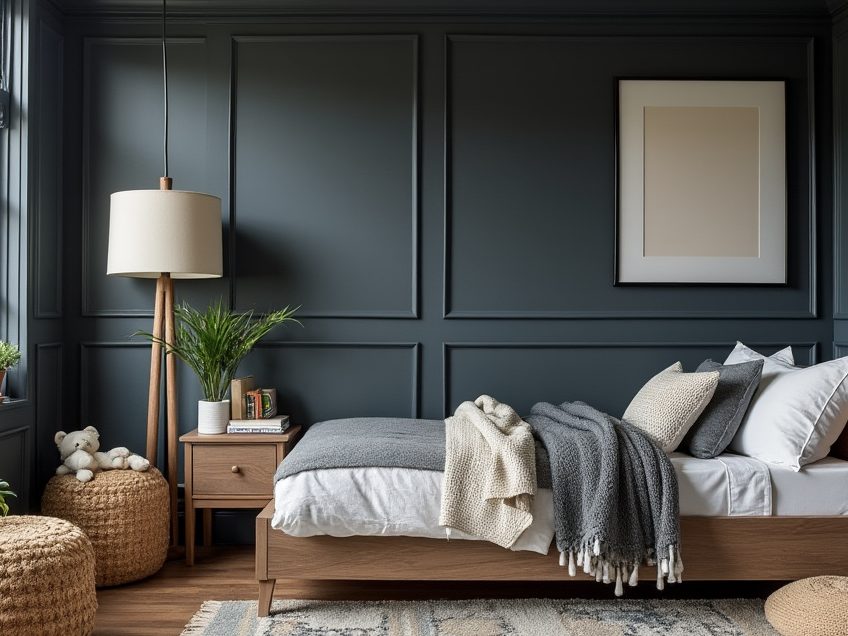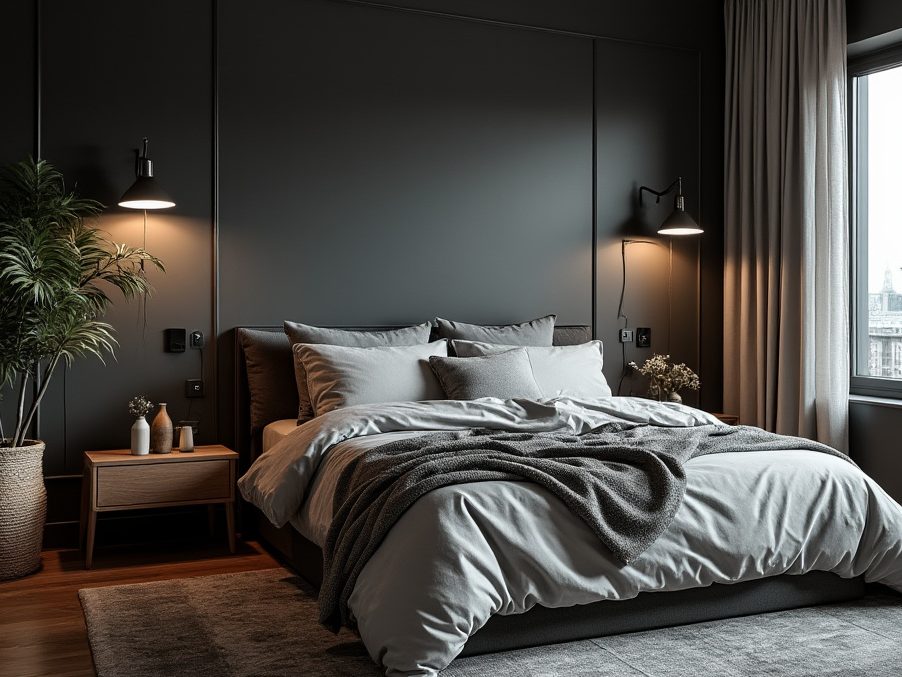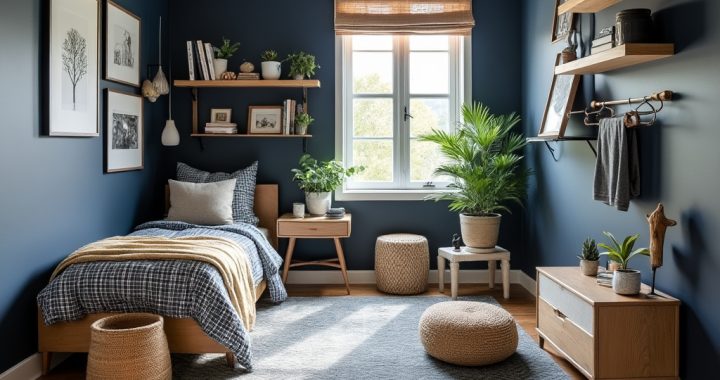The Design Dilemma
Megan, a regular listener of the RepcoLite Home Improvement Show, wrote in with a design dilemma: her son wants to use a dark color in a small room. His goal is to paint everything in his bedroom a dark charcoal, a choice that intuitively seems like it would shrink an already tight space. Let’s explore how designer Andy Yates approaches this challenge!

The Charcoal Conundrum
The choice of color in interior design, especially in small rooms, can be daunting. However, Andy points out that “if the charcoal hue isn’t too dowdy or heavy, it might be just fine.” He goes on to explain, “It may sound like an oxymoron, but not all charcoal hues are drab and dreary. If you ensure that the undertones of the color involve more than just an equal mix of black and white, you can actually arrive at a more joyful charcoal in a way. For example, if your choice is more along the lines of a battleship gray, with some blue undertones, it can still give you that sense of flat ash while at the same time being a bit calming and a little more dynamic.”
Monochromatic Magic: The Art of Color Drenching
So, with the right charcoal color, you’re not necessarily locked into a drab, dull tone. But what about painting everything in the room the same color? Won’t that be too much of a good thing? Andy disagrees, explaining “I love to paint rooms monochromatically: trim, walls, and ceilings. Even in small rooms, this approach can make a bold statement without overwhelming the viewer. I think that, especially when you adjust the sheen–I’m thinking satin on your trim, flat or matte on your walls and ceilings–it still adds levels of interest.”

This color drenching concept isn’t a new one–we’re seeing a lot of it right now. Color drenching has many strengths and can be used to unify a space that feels disjointed. But, as Andy mentioned, by varying the finishes you use, even though the color is the same, you can still create boundaries and highlight architectural features if you want to do so.
Psychology of Space: Dark Colors in Small Room Design
Finally, what about the dark color making the room feel smaller? Contrary to popular belief, Andy argues that dark colors might not necessarily make a room feel smaller. “Dark colors recede, and light colors reflect light, so they approach you. I often use this analogy: Imagine you’re sitting in a dark theater with the screen on, knowing that all of the walls and ceiling are black. In that instance, you can’t really tell where the walls are, because they’ve disappeared. They’re receding away, and you can’t really see the ceiling, so you don’t know how tall the space is. So dark colors can actually make a space feel a little bit more expansive, because the boundaries disappear. Psychologically, it’s very interesting.”
Balancing the Darkness
To ensure the room doesn’t feel too oppressive, Andy recommends balancing the dark walls with lighter elements. “Think about art, bedding, or even the flooring,” he advises. “Adding elements that reflect light or introduce color can counteract the room’s overall darkness.”
Conclusion: Crafting a Cohesive Look
In wrapping up, Andy reiterates that there’s no universally ‘wrong’ color for any room. “It’s about how everything comes together. If Megan’s son finds the room too dark post-painting, introducing lighter furnishings or bold art can easily adjust the ambiance.”
We’re Here to Help!
If you’re trying to use a dark color in a small room, we have color experts on hand at every RepcoLite location, waiting to help you find the best path forward! Bring your questions, your ideas, your concerns, (and if it helps) your kids . . . and we’ll work with all of you to find the perfect color for your space!
Have you tried dark colors in a small room? Share your experiences or design tips in the comments below!

